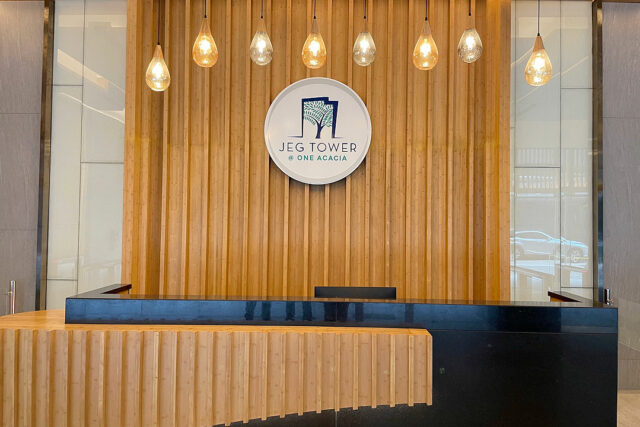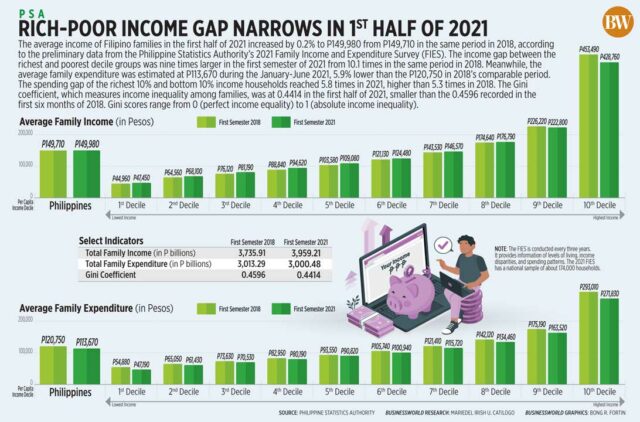AT THE APEX of Dubai’s Palm Jumeirah, a hulking new edifice has appeared. The $1.4-billion hotel-and-residence combo dubbed Atlantis Royal has been 14 years in the making. It is aimed at raising the bar for luxury in the world’s most famously opulent city.
The 43-storey, 87,097-square-meter construction sits next door to its iconic family-friendly sibling, the Palm, and looks like an architectural blend between a Jenga game and the Millennium Falcon. Its futuristic curves and sky gardens offer sweeping vistas of the Persian Gulf from 795 guest rooms and 231 apartments.
Were a hotelier to make a laundry list of every luxury amenity and multiplied it by 10 in both ambition and sheer quantity — 92 pools, check; outdoor crystal chandeliers that transform into sunshades, check; 17 restaurants and bars from chefs including Heston Blumenthal and José Andrés, check — it would look on paper a whole lot like the Royal. But executing such a project has been nothing short of challenging.
Like the other Atlantis in Dubai — which has no connection to the one in the Bahamas — the Royal started as a joint venture between hospitality developer Kerzner International Ltd., which owns the One&Only Resorts brand, and investment firm Istithmar World. After funding dried up amid the global financial crisis of 2008, the property was left to languish for years.
Swooping in for the rescue came the Investment Corp. of Dubai (ICD), the emirate’s sovereign wealth fund. Since taking over construction in 2016, it’s considered Atlantis Royal a lynchpin in the overall strategy to grow Dubai’s tourism scene by focusing less on families and more on partygoing singles. Particularly in the 25-44 age group, these have been tracked by Emirates Airlines as a fast-growing demographic in recent years, particularly since COVID-19 struck.
Pandemic restrictions on labor movement and the attendant supply chain crisis plagued and delayed the already pricey construction. Now, with plans to start taking reservations in third quarter 2022, here’s an inside look at what the Royal might add to Dubai’s mix, based on an exclusive hard-hat tour of the sybaritic excesses currently in the works.
OVER-THE-TOP AMENITIES
Though it was barely more than concrete foundation on the day I toured it, the influencer-ready Cloud 22 was a good place to start wrapping my head around the Royal. Its 90-meter rooftop pool hovers 22 floors above the skyline. (Hence the name.) It’s already outfitted with a fiberglass DJ booth shaped like a robot’s head, with red LED “veins” to pulse to the music, and each of its 14 cabanas has a private acrylic plunge pool. A bi-level “VVIP” cabana has a special acrylic-bottomed pool that appears to be floating out over the structure’s edge.
From the ground level, it’s easier to appreciate the architecture, which is wider than it is tall. Done by New York-based Kohn Pedersen Fox Associates, which designed the master plan for Manhattan’s Hudson Yards, it’s meant to look like a skyscraper that’s been deconstructed into side-by-side bits and pieces, some connected by a swooping, futuristic sky bridge.
Most restaurants will be on the ground floor, including a branch of Andrés’s Spanish tapas spot Jaleo, a classic sushi entry from Nobu Matsuhisa, and an offshoot of Heston Blumenthal’s experimental flagship in London, Dinner. Additional spots will carry more regional name recognition, such as Ariana’s Persian Kitchen, whose namesake proprietor Ariana Bundy has a popular cooking show that airs throughout Asia and the Middle East. Ling Ling by Hakkasan, a restaurant and lounge overlooking Cloud 22, will provide the highest-profile drinking and dancing spot.
Also on the ground floor is the largest privately owned beachfront in Dubai, a 2-kilometer (1.25-mile) stretch of sugary sand just for guests and residents that extends to the original Atlantis resort. The only comparable space is at the new Anantara World Islands; accessible only by speedboat, a 2,000-square-meter private beach is accessible only to guests staying in its 70 rooms and suites.
RECOVERY
Indulgence is just one side of the coin; wellness is the other. “Property features that target emotional and spiritual wellness, such as spaces for meditation and massage, are more important than ever,” says Timothy Kelly, executive vice-president and managing director of Atlantis. The pandemic, he adds, sparked greater interest in holistic wellness among travelers.
The 3,000-square-meter wellness center offers a six-room “Hammam Sensorium” where the typical Turkish bathhouse experience will be upgraded with aromatic poultices blended in accordance with your preferences. There are also Korean spa-style “halotherapy” salt caves and a snow sauna.
Typical of Dubai’s hospitality competition, such amenities as hypnotherapy treatments (available to address anything from insomnia to anxiety) are meant to distinguish from the more superficial $422 caviar facials at the “seven star” Burj al Arab; whether they’re as relaxing as a simple high-quality massage remains to be determined. I did find it surprisingly calming to look at some of the art already in the lobby, including a 11.5-meter-tall, 5.5-ton stainless steel sculpture called Droplets, which has the bulbous and shiny essence of a Jeff Koons Balloon Dog and plays off the movement of 4,000 jellyfish serenely flagellating through nearby tanks.
Atlantis Royal’s ambitions mirror Dubai’s. Sheikh Mohammed bin Rashid al-Maktoum, vice-president and prime minister of the UAE and ruler of Dubai, plans to double Dubai’s tourism over the next 20 years in hopes of making it the most-visited city in the world.
The COVID-19 pandemic hobbled some of those ambitions. In 2021, Dubai expected 27 million visitors but saw only 7.28 million, though its borders were open all year, Even with the help of Expo 2020, which began in October, the city failed last year to recoup tourism levels to those of 2019, much less exceed them, as was hoped. During the fourth quarter, Dubai welcomed 3.4 million visitors — 74% of what the city hosted during the same period in 2019.
One explanation is the drop-off in Chinese visits that represented 989,000 of the 16.7 million tourist visits to the city in 2019 — the fifth-largest source market for visitors. A fresher wrinkle is the decline in high-spending Russian tourists, whose purchasing power has evaporated because of sanctions triggered by Russia’s invasion of Ukraine. (The UAE is serving as a prominent haven for some the wealthiest Russians).
The silver lining for Atlantis Royal is that it can offset some lagging tourism by selling residences to help recoup the $1.4 billion project outlay. Apartments in the tower, listed from $2 million to $49 million and including Dubai’s most expensive unit, have all sold. Real estate agents report interest from a flurry of cryptocurrency investors and blockchain entrepreneurs looking to set up shop in a city that’s becoming increasingly crypto-friendly. (Sheikh Mohammad has been pushing to promote the industry through “free zones,” which can license and approve crypto transactions and are lax on taxes.)
Industry insiders say additions such as the Royal are just what Dubai needs to reach its lofty tourism goals. “The tourism industry is much bigger than oil and gas in Dubai,” explains Kostas Nikolaidis, who focuses on the Middle East for global hospitality data and insights firm STR. “Iconic hotels like this not only bolster the image of the destination but can also often stimulate new demand.” — Bloomberg




















